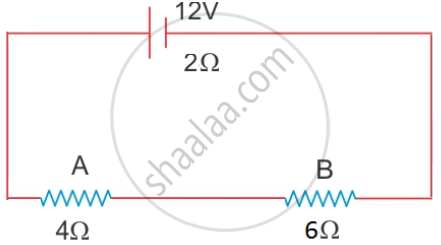Advertisements
Advertisements
Question
Solution
APPEARS IN
RELATED QUESTIONS
A battery of emf 12 V and internal resistance 2 Ω is connected with two resistors A and B of resistance 4 Ω and 6 Ω respectively joined in series.

Find:
1) Current in the circuit
2) The terminal voltage of the cell
3) The potential difference across 6Ω Resistor
4) Electrical energy spent per minute in the 4Ω resistor.
A resistance of 20 ohms has a current of 2 amperes flowing in it. What potential difference is there between its ends?
What is Ohm's law? Explain how it is used to define the unit of resistance.
Define the unit of resistance (or Define the unit "ohm").
In the circuit shown below:

The potential difference across the 3 Ω resistor is:
100 joules of heat is produced per second in a 4 ohm resistor. What is the potential difference across the resistor?
How is the electric potential difference between the two points defined? State its S.I. unit.
The V-I graph for a series combination and for a parallel combination of two resistors is shown in Fig – 8.38. Which of the two, A or B, represents the parallel combination? Give a reason for your answer.
Write an expression for the electrical power spent in flow of current through a conductor in terms of resistance and potential difference.
A cylindrical conductor of length l and uniform area of cross section A has resistance R. Another conductor of length 2l and resistance R of the same material has area of cross section
